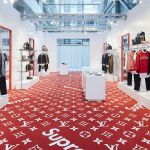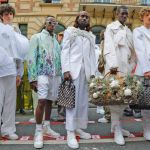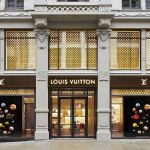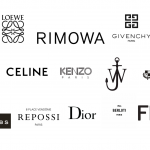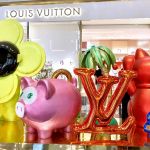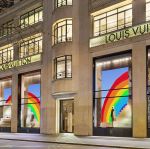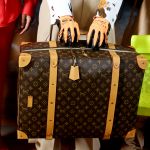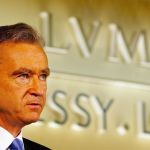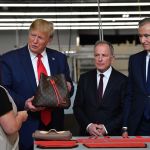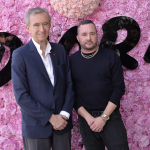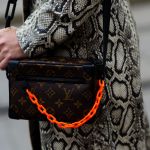
How LVMH became the world’s biggest luxury seller
A brief history of the French conglomerate led by Bernard Arnault
December 22nd, 2019
After weeks of talks and meetings, LVMH has finally bought last October Tiffany. The deal, the largest in its history, will allow the French group to increase its presence in the United States and to strengthen its position in high jewellery, integrating a portfolio that already includes other brands in the sector such as Bulgari, Chaumet, TAG Heuer and Hublot. The retail chain made unforgettable by the film starring Audrey Hepburn Breakfast at Tiffany will give the company an increase in revenues, a figure already very high, which in 2018 reached 46.8 billion euros, about three times the 14 billion euros of Richemont and 13.7 billion euros of Kering, always its closest rival, in recent fiscal years. Sales grew by 10%, while the Ebit reached the threshold of 10 billion, with an increase of 21%. According to the analysts, even if the jewellery and watches department of LVHM provides only 9% of the turnover at this moment, it has a high margin of growth and with the purchase of Tiffany will double to 16%. Much of the credit for these excellent results are due to Bernard Arnault, Chairman and CEO of LVMH, who, with a far-sighted approach, realized that a brand of suitcases and one of the liquors could be turned into the core of a colossus world leader in luxury.
What is LVHM?
It's a French conglomerate that controls over 70 luxury companies with 4592 shops and over 156 thousand employees worldwide, operating in various sectors, from fashion like Louis Vuitton and Dior to jewellery, from wines like Veuve Clicquot or Hennessy to retailers like Le Bon Marché Rive Gauche or Sephora. LVMH's history began in 1987 when two supposedly different companies merged together in a $4 billion deal: Louis Vuitton, led by Henri Racamier, and Möet-Hennessy, led by Alain Chevalier. Because the wine company was three times larger than LV, it was LV who was appointed the president of the new holding company, provoking Racamier's resentment and a long legal battle for the management of the conglomerate. Finally, a young entrepreneur named Bernard Arnault won the battle. After graduating in Engineering at the École Polytechnique in Palaiseau, Arnault started his career working for Ferret-Savinel, the construction company founded by his grandfather, and entered the luxury sector officially only in 1984, saving Boussac from bankruptcy. With the takeover of the textile group thanks to 15 million dollars from his family combined with 45 million dollars obtained from the French financial institution Lazard Frères, the man becomes the owner of Christian Dior, the department store Le Bon Marché and other brands. According to the New York Times in 1989 and the most recent documentary Merci Patron!, in the next two years "Arnault had pushed Boussac into black, firing 9,000 workers and selling Boussac's disposable diaper division and most of its textile business for $500 million. On the other hand, it helped him "to move from a family business of $15 million a year to a business 20 times larger."
Aiming to strengthen his position, Racamier asked Arnault to invest in LVMH but underestimated his ambition. In a short time, Arnault became the majority shareholder, forcing both Racamier and Chevalier to retire, and in 1989 he was appointed the president of the group, a role he still has today. Once in charge, the first move of the businessman was to replace the existing team with men he trusted, while he spent the following decades incorporating new luxury brands into the group. Only in the 1990s did he buy, among others, Berluti, Kenzo, Guerlain, Celine, Loewe, Marc Jacobs, Sephora, Tag Heuer and also record his first defeat when archival François Pinault blew Gucci for $2.92 billion in what has been called by the New York Post as "the bloodiest fight in fashion". Speaking of his idea of putting under the same umbrella different luxury brands, often in competition with each other, Arnault told CNBC:
True luxury is a relative idea, which varies according to people. LVMH's goal is to create products and experiences, so as to offer customers a sense of authentic value. And then the word luxury has become a bit obsolete, I prefer high-quality products. The important thing is that in ten years our brands have remained objects of desire.
And he added:
In the 90s (I) had the idea of a luxury group and at the time I was very much criticized for it. I remember people telling me it doesn’t make sense to put together so many brands. And it was a success ... And for the last 10 years now, every competitor is trying to imitate, which is very rewarding for us. I think they are not successful but they try.
This strategy of acquiring several brands, firing the management team to replace him with his trusted men or with one of his five children and has now become a standard in the business world copied by all.
Arnault's instinct has led him to be a "first mover" in many cases. He introduced ready-to-wear to an haute couture company by hiring Marc Jacobs at Louis Vuitton, allowing the designer to revolutionize the brand with his unique style and collaborations with contemporary artists such as Takashi Murakami. He also used the fashion show to sell high margin items such as perfumes or handbags and was one of the first foreign businessmen to invest in China at the start of Deng Xiaoping's market economy reforms, opening a Louis Vuitton store in Beijing in 1992. Actually, Asia is the place where LVMH has more shops than in the rest of the world: 1289 against 1153 Europeans (excluding France) and 783 in the United States. In an interview, the CEO revealed that part of LVMH's success "is this duality, timelessness and maximum modernity.
Following this philosophy, in recent years, LVMH has added, among others, to its portfolio: Fendi, Bulgari, the entire Christian Dior (before 2017 Groupe Arnault, which is the private holding company owned and controlled by Arnault, was the sole majority shareholder), J.W. Anderson, Rimowa, Stella McCartney and Fenty as part of a joint venture with Rihanna. The conglomerate's properties rose to 75, generating a turnover that in 2018 alone exceeded the record of 51 billion dollars and has increased its advertising spending by two billion euros over the last five years. According to Statista, the global corporate data platform, it went from 3,310 spent in 2013 to 5,52 in 2018. Despite its global success, the French empire already has other plans for the future. The first is to expand and consolidate its presence in the United States, as evidenced by its deal with Tiffany and the opening of a new LV manufacturing facility in Johnson County, Texas.

















































